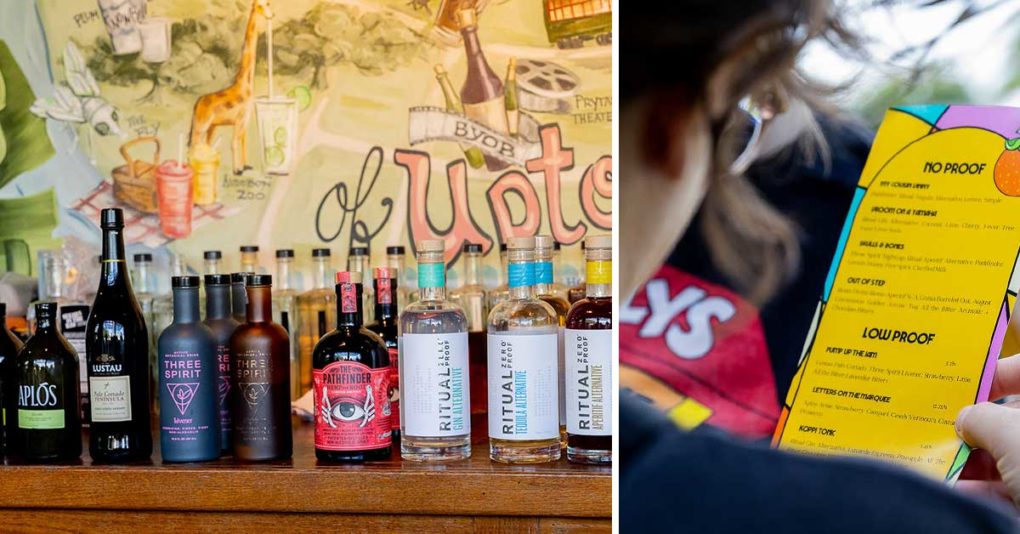
Alex Jump, co-founder of Focus on Health, has some ideas. A Forbes “30 under 30 Food and Drink” alumni, the bar consultant was a bar manager at one of the country’s most renowned cocktail bars, Death & Co. In 2020, Jump co-founded Focus on Health with her business partner, Lauren Paylor, where they use their platform to advocate for the physical and mental wellbeing of the food and beverage industry. The company also provides wellness and no/low consulting to the on-premise industry and anyone from global spirit companies to non-alc brands like Three Spirit.
Just off a cross-country multi-brand sponsored no/low cocktail tour with Mover & Shaker that culminated at Tales of the Cocktail, Jump emerged with fresh insights on some of the top opportunities for no/low brands in the on-premise sector and beyond.
Full-Strength Brands Can Still Find Opportunity in Low ABV
Much of the work Jump and her partner do for larger spirit portfolios includes wellness consulting for brand ambassadors, who spend many of their working hours at bars. A trick of the healthier trade is to order low-ABV drinks, but those cocktails can still include the full-strength products the ambassadors represent, showcasing the product’s flexibility.
“Probably the biggest learning opportunity with the brands I’ve worked for is being able to show bartenders recipes that use their products but maybe don’t use a full 2 oz, so it still highlights their product and it’s lower ABV,” she said.
Bartender Engagement Needs to Shakeup
Many no/lo brands positioning themselves as spirit replacements are not meant to be sipped straight— and they shouldn’t be trialed that way.
“I think that a lot of non-alc brands probably have a little bit of their work cut out for them in terms of getting people to taste their products, because a lot of them you can’t just taste on their own,” she said.
Engaging the trade in cocktail experiences and even having simple mixers on hand while selling or during demos is key to a good first impression, she added.
Win The Home-Premise
Remember when lockdown made everyone a bread baker and mixologist? Now it’s time for no/low brands to take advantage of the same cocktailing enthusiasm at home, Jump argued. Until resources for non-alc cocktailing become widely available, she said the messaging to consumers needs to be on how to use non-alc spirits at home.
When Jump does public-facing workshops for brands, consumers often ask what educational resources are available to replicate non-alcoholic cocktails in their own kitchens.
“I don’t often have an answer for that,” she said.
Get Down to Business
Daytime consumption of both no- and low-alcohol has increased this year, according to IWSR, signaling potential for the category to expand beyond alcohol-replacement occasions.
But the business lunch and happy hour are likely good times to find a drinker looking to replace a drink while out with colleagues.
“Especially business lunch and happy hour time are probably really great times to highlight non-alcoholic options and capture people who do drink but maybe would prefer a fancy beverage that’s non alcoholic during a business meeting,” she said.
Switching between alcohol and no/low is common, both in the same occasion and between different ones: 78% of consumers of no/low products also drink full-strength alcohol and the largest subset (41% of no/low consumers) are classified as ‘substituters’, who choose no/low products when avoiding alcohol on certain occasions, according to the IWSR.
But Every Occasion Can Be No/Low
“We really believe that every kind of person is coming to your establishment, and that includes people who don’t drink,” Jump said.
That’s the main message to on-premise accounts, she said, and one that brands are eager to echo. These days, Jump always provides non-alc versions of her cocktails for restaurant menus, if not an entirely distinct no or low-ABV menu. She and her partner operate on the philosophy that the only reason someone isn’t ordering a non-alc cocktail is because they’re not available.
“So if you have non-alcoholic cocktails on your menu, you’re making significantly more money,” she said.